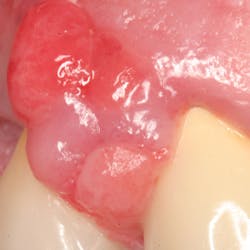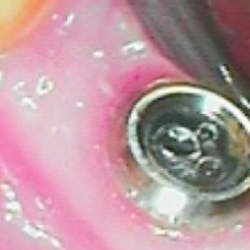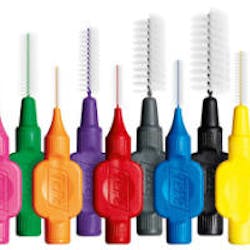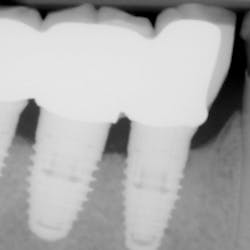How many times a day do you tell your patients that they need to floss? What is their response? I’m sure we all hear the same excuses, but what if a patient said to you, “I am not going to floss. What else can you suggest?” Do you have a good answer?
Perhaps it is time to shift from telling our patients they need to floss to saying, It is important to clean between the teeth, and here are some of the ways you can accomplish that task. Now some of you may think this is heresy, but let’s look at the facts.
- A 2008 systematic review that compared brushing alone to brushing and flossing found that only one of the 11 studies included showed a reduction in bleeding when floss was used. None of the studies showed a reduction in gingival inflammation. The researchers concluded: “The dental professional should determine, on an individual basis, whether high-quality flossing is an achievable goal. In light of the findings of this comprehensive literature search and critical analysis, it is concluded that routine instruction to use floss is not supported by scientific evidence.” (1)
- The impact of flossing on reducing interproximal caries was addressed in a 2006 systematic review by Hujoel and colleagues (2) who found that based on the available research, flossing does not reduce the risk of interproximal decay. There were no studies identified with adults or under unsupervised conditions. One study did find a benefit for primary teeth in children who had professional flossing and no fluoride exposure.
- The majority of individuals do not floss, may not feel confident with their technique, and if given a choice, will choose anything other than floss. (3, 4, 5)
So what do you do? You could recommend a floss holder but that does not solve the issues with using floss. You can recommend interproximal brushes, which can be very effective and work for some patients. Keep in mind they may not fit into all spaces or require multiple types and sizes. Toothpicks or wood sticks are not designed to reach through the interproximal space, and anatomy impedes cleaning the convex surface.
Recently, the Waterpik® Water Flosser was compared to string floss in three different studies. Collectively, the studies showed the Water Flosser was more effective at removing plaque and reducing gingival inflammation and bleeding. (6, 7, 8) Add this to the studies showing it is safe and effective with orthodontics, implants, crown and bridge, and other dental work, gingivitis, and those in periodontal maintenance or living with diabetes, and you have a product that can help most of your patients. The Water Flosser is easy to use, reaches interdentally and subgingivally, cleans all the areas that the toothbrush cannot reach, and is unequivocally effective. Practitioners find that their patients not only like to use the Water Flosser, but can see and feel the difference.
Still not convinced? Try it for yourself and with one of your patients. Remember, the goal is excellent oral health. How your patient gets there should not matter.
Author bio
Deborah Lyle, RDH, MS, received her Bachelor of Science degree in dental hygiene and psychology from the University of Bridgeport and her Master of Science degree from the University of Missouri – Kansas City. She has 18 years of clinical experience in dental hygiene with an emphasis in periodontal therapy. Along with her clinical experience, Deborah has been a full-time faculty member at the University of Medicine & Dentistry of New Jersey, Forsyth School for Dental Hygienists, and Western Kentucky University. She has contributed to Dr. Esther M. Wilkins’ 7th, 8th, 9th, and 10th editions of Clinical Practice of the Dental Hygienist and the 2nd and 3rd edition of Dental Hygiene Theory and Practice by Darby & Walsh. She has written numerous evidence-based articles on the incorporation of pharmacotherapeutics into practice, risk factors, diabetes, systemic disease, and therapeutic devices. She is an internationally known speaker and has presented numerous continuing education programs. Additionally, she is an editorial board member for the Journal of Dental Hygiene, has conducted several studies that have been published in peer-reviewed journals, is group program chair for AADR/IADR, and chairs ADHA’s council on research. Currently, Deborah is the director of professional and clinical affairs for Water Pik, Inc.
References
1. Berchier CE, Slot DE, Haps S, Van der Weijden GA. The efficacy of dental floss in addition to a toothbrush on plaque and parameters of gingival inflammation: a systematic review. Int J Dent Hygiene. 2008; 6(4):265-279.
2. Hujoel PP, Cunha-Cruz J, Banting DW, Loesche WJ. Dental flossing and interproximal caries: a systematic review. J Dent Res 2006; 85(4):298-305.
3. Kleber CJ, Putt MS. Formation of flossing habit using a floss-holding device. J Dent Hyg 1990; 64:140-143.
4. Christou V, Timmerman MF, van der Velden U, van der Weijden FA. Comparison of different approaches of interdental oral hygiene: interdental brushes vs. dental floss. J Periodontol 1998; 69:759-764.
5. Lang WP, Farghaly MM, Ronis DL. The relation of preventive dental behaviors to periodontal health status. J Clin Periodontol 1994; 21:194-198.
6. Barnes CM, Russell CM, Reinhardt RA, Payne JB, Lyle DM. Comparison of irrigation to floss as an adjunct to toothbrushing: effect on bleeding, gingivitis, and supragingival plaque. J Clin Dent 2005; 16:71-77.
7. Sharma NC, Lyle DM, Qaqish JG, Galustians J, Schuller R. Effect of a dental water jet with orthodontic tip on plaque and bleeding in adolescent patients with fixed orthodontic appliances. Am J Orthod Dentofacial Orthop 2008; 133:565-571.
8. Rosema NAM, Hennequin-Hoenderdos NL, Berchier CD, Slot DC, Lyle DM, van der Weijden GA. The effect of different interdental cleaning devices on gingival bleeding. J Int Acad Periodontol 2011; 13:2-10.







